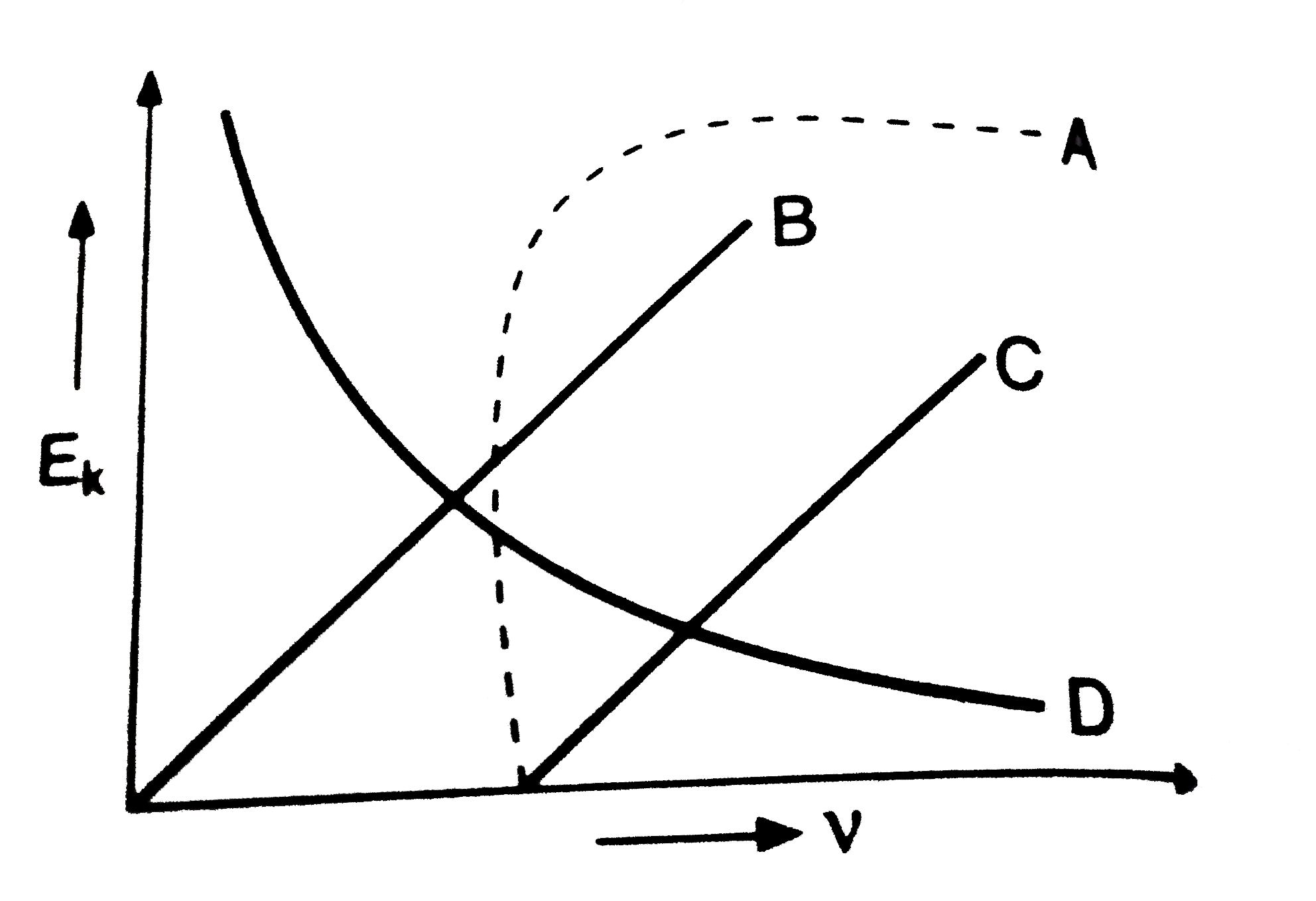When monochromatic light falls on a photosensitive material, the number of photoelectrons emitted per second is n and their maximum kinetic energy is Kmax. If the intensity of the incident light is doubled keeping the frequency same, then:
Both n and Kmax are doubled
Both n and Kmax are halved
n is doubled but Kmax remains the same
Kmax is doubled but n remains the same
Step by step video & image solution for When monochromatic light falls on a photosensitive material, the number of photoelectrons emitted per second is n and their maximum kinetic energy is K_(max). If the intensity of the incident light is doubled keeping the frequency same, then: by Physics experts to help you in doubts & scoring excellent marks in Class 12 exams.
Updated on:21/07/2023Topper's Solved these Questions
- PHOTOELECTRIC EFFECT AND MATTER WAVESBook:PHYSICS GALAXY - ASHISH ARORAChapter:PHOTOELECTRIC EFFECT AND MATTER WAVESExercise:Numerical MCQs
Explore 60 Videos
- PHOTOELECTRIC EFFECT AND MATTER WAVESBook:PHYSICS GALAXY - ASHISH ARORAChapter:PHOTOELECTRIC EFFECT AND MATTER WAVESExercise:Advance MCQ
Explore 28 Videos
- PHOTOELECTRIC EFFECT AND MATTER WAVESBook:PHYSICS GALAXY - ASHISH ARORAChapter:PHOTOELECTRIC EFFECT AND MATTER WAVESExercise:Discussion question
Explore 50 Videos
- NUCLEAR PHYSICS AND RADIOACTIVITYBook:PHYSICS GALAXY - ASHISH ARORAChapter:NUCLEAR PHYSICS AND RADIOACTIVITYExercise:Concptual MCQs
Explore 48 Videos
- THERMODYNAMICS LAWS & SPECIFIC HEATS OF GASES Book:PHYSICS GALAXY - ASHISH ARORAChapter:THERMODYNAMICS LAWS & SPECIFIC HEATS OF GASES Exercise:Practice Exercise 3.4
Explore 11 Videos
Similar Questions
The photoelectros emitted by an illuminted surface have a maximum kinetic energy of 3.0 eV. If the intensity of the light is tripled, What is the maximum kinetic energy of photoelectrons now?
View SolutionFor a given photosensitive material and with a source of constant frequency of incident radiation, how does the photocurrent vary with the intensity of incident light ?
View Solution
Knowledge Check
The frequency of incident light falling on a photosensitive metal plate is doubled, the KE of the emitted photoelectrons is
Adouble the earlier valueBunchangedCmore than doubledDless than doubledThe maximu kinetic energy (Ek) of the photoelectron varies with frequency (v) of the incident light as shown by the curve:
 AABBCCDD
AABBCCDDWhen monochromatic radiation of intensity I falls on a metal surface, the number of photoelectrons and their maximum kinetic are N and T respectively. If the intensity of radiation is 2 I, the number of emitted electrons and their maximum kinetic energy are respectively.
AN and 2TB2N and TC2N and 2TDN and T
In photoelectric emission the maximum energy of the photoelectrons increases on increasing the intensity of incident light.
View SolutionWhen monochromatic light of wavelength 620 nm is used to illuminate a metallic surface, the maximum kinetic energy of photoelectrons emitted is 1 eV. Find the maximum kinetic energy of photoelectron emitted (in eV) if a wavelength of 155 nm is used on the same metallic surface. (hc = 1240 eV-nm)
View SolutionAssertion: A photosensitive surface is illuminated by a monochromatic light of wavelength λ and intensity I. The number of photoelectrons emitted per second is doubled when the intensity of light is doubled. However, the maximum speed of emitted electrons remains unchanged.
Reason: The number of electrons emitted per second is directly proportional to the intensity of the incident light. The kinetic energy of the emitted photoelectrons is independent of the intensity of the light.
View SolutionWhen monochromatic radiation of intensity I falls on a metal surface, the number of photoelectrons and their maximum kinetic are N and T respectively. If the intensity of radiation is 2 I, the number of emitted electrons and their maximum kinetic energy are respectively.
View SolutionAssertion : Photoelectric current depends on the intensity of incident light.
Reason : Number of photoelectrons emitted per second is directly proportional to intensity of incident radiation.
View Solution

